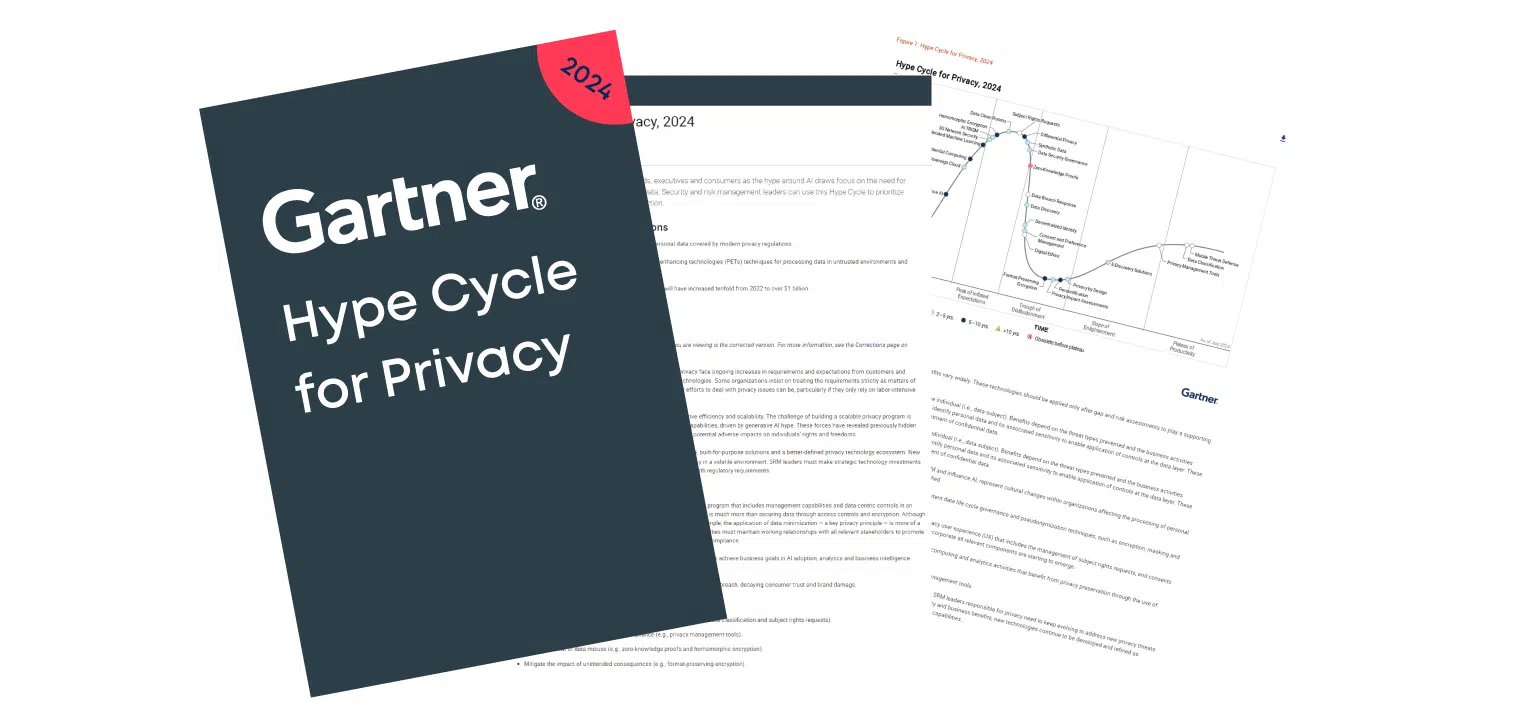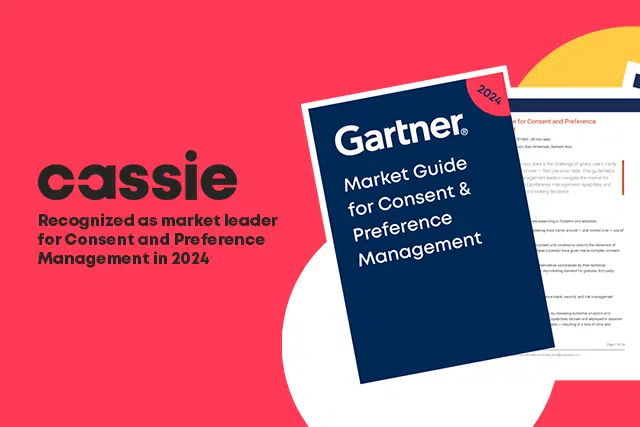Data clean rooms: Ensuring privacy and enhancing insights
Posted: August 7, 2024
What is a data clean room?
A data clean room is a secure digital environment where organizations can collect, share, and analyze data from multiple sources without exposing personally identifiable information (PII). This setup ensures compliance with data privacy regulations, such as GDPR and CCPA, while enabling collaborative data analytics. By using advanced encryption and privacy-preserving techniques, data clean rooms allow multiple parties to gain valuable insights from combined datasets without compromising the privacy of individuals.
How do data clean rooms work?
Data clean rooms operate by removing all PII from the data before it is shared. This process involves anonymizing and aggregating the data, ensuring that individual identities cannot be discerned. Once the data is anonymized, multiple parties can combine their datasets within the clean room and perform collaborative analysis. This setup allows organizations to extract insights and perform advanced analytics without compromising privacy. The secure environment and strict access controls ensure that only authorized users can access the data, maintaining the confidentiality and integrity of the information.
Types of data clean rooms
Data clean rooms come in various forms, each tailored to specific needs and use cases. These secure environments enable organizations to share and analyze data collaboratively while maintaining privacy and compliance. From managed services provided by data warehouse providers to specialized solutions for media companies, private setups for internal use, and walled gardens offered by large tech companies, each type of data clean room offers unique benefits.
Clean rooms as a service
Clean Rooms as a Service are managed environments provided by data warehouse providers. These services offer a secure platform where organizations can share and analyze data collaboratively. The providers handle the infrastructure, security, and compliance aspects, allowing organizations to focus on data analysis. This type of clean room is particularly beneficial for companies that do not have the resources or expertise to set up and maintain their own data clean rooms. By leveraging these managed services, organizations can ensure that their data sharing and analysis activities comply with privacy regulations while gaining valuable insights from combined datasets.
Media data clean rooms
Media data clean rooms are specifically designed for media companies to combine and analyze audience data from various platforms. These clean rooms enable media companies to gain a comprehensive understanding of their audience by integrating data from different sources, such as television, online streaming, and social media. By analyzing this aggregated data, media companies can uncover trends and patterns in audience behavior, which can inform content creation, advertising strategies, and audience engagement efforts. Media data clean rooms ensure that the privacy of individual viewers is maintained while allowing for detailed audience analysis.
Private data clean rooms
Private data clean rooms are set up by individual organizations for internal data sharing and analysis. These clean rooms are tailored to the specific needs and requirements of the organization, providing a secure environment for internal teams to collaborate on data projects. Private data clean rooms are often used by large enterprises with multiple departments or subsidiaries that need to share and analyze data without exposing sensitive information. By creating a controlled environment for data collaboration, organizations can enhance their data-driven decision-making processes while ensuring compliance with privacy regulations.
Walled garden data clean rooms
Walled garden data clean rooms are provided by large tech companies, such as Google and Facebook. These clean rooms allow advertisers to analyze data within the confines of the platform, combining their own data with the platform’s data to gain insights into ad performance and audience behavior. Walled garden data clean rooms offer a secure and privacy-compliant way for advertisers to measure the effectiveness of their campaigns and optimize their marketing strategies. However, the data analysis is restricted to the platform’s environment, meaning that advertisers cannot export the combined data for use outside the clean room. This type of clean room ensures that user privacy is protected while enabling detailed ad performance analysis.
Benefits of using data clean rooms
Privacy compliance
One of the primary benefits of data clean rooms is their ability to ensure compliance with stringent privacy regulations such as the General Data Protection Regulation (GDPR) in Europe, the California Consumer Privacy Act (CCPA) in the United States, and the Health Insurance Portability and Accountability Act (HIPAA) in the healthcare sector. These regulations mandate that organizations protect sensitive information and give consumers greater control over their personal data. Data clean rooms achieve this by anonymizing and aggregating data, thereby removing personally identifiable information (PII) before any analysis is conducted. This ensures that data analysis can be performed without risking the exposure of sensitive information, helping organizations stay compliant with legal requirements and avoid hefty fines.
Secure collaboration
Data clean rooms facilitate secure collaboration between different organizations or departments by providing a controlled environment for data sharing and analysis. This is particularly valuable for businesses that need to collaborate with external partners or across various internal teams. For example, a retail company might collaborate with a marketing agency to analyze customer purchase data and develop targeted advertising campaigns. By using a data clean room, both parties can share and analyze the data without exposing raw data to each other, ensuring that sensitive information remains protected. This secure collaboration enables organizations to leverage combined datasets for more comprehensive insights while maintaining data privacy.
Enhanced insights
Data clean rooms allow organizations to combine datasets from multiple sources, leading to richer and more comprehensive data analysis. By integrating data from various platforms and sources, businesses can uncover deeper insights and make more informed decisions. For instance, a company might combine its sales data with social media engagement metrics to understand how online interactions influence purchasing behavior. This holistic view enables organizations to identify trends, patterns, and correlations that would not be apparent from isolated datasets. Enhanced insights gained from data clean rooms can drive better business strategies, improve customer experiences, and optimize operational efficiency.
Data monetization
Data clean rooms also enable organizations to monetize their data by securely sharing it with partners or customers. By providing a secure environment for data exchange, businesses can collaborate with third parties to create new revenue streams. For example, a telecommunications company might share anonymized customer usage data with a market research firm to gain insights into consumer behavior. This collaboration can lead to the development of new products, services, and marketing strategies that benefit both parties. Data clean rooms ensure that this data sharing is conducted in a privacy-compliant manner, protecting sensitive information while unlocking the value of the data.
Use cases
Data clean rooms have become indispensable across various industries, providing a secure and compliant environment for data collaboration and analysis. These controlled environments enable organizations to combine and analyze data from multiple sources without compromising privacy. In sectors such as marketing and advertising, healthcare, and finance, data clean rooms facilitate deeper insights, enhance decision-making, and drive innovation while ensuring that sensitive information remains protected. Below we highlight specific use cases demonstrating the impact of data clean rooms in these industries.
Marketing and advertising
In the marketing and advertising sector, data clean rooms have become an essential tool for analyzing customer behavior, measuring campaign performance, and enhancing targeting strategies. By combining data from various sources, such as social media platforms, website analytics, and customer databases, marketers can gain a comprehensive view of their audience. This holistic approach allows them to understand customer preferences, behaviors, and purchasing patterns more accurately. For instance, an advertiser can use a data clean room to merge their own customer data with third-party data from a social media platform. This enables them to measure the effectiveness of their advertising campaigns, identify which segments of their audience are most engaged, and refine their targeting strategies to reach the right customers without violating privacy laws. The secure environment of a data clean room ensures that all personally identifiable information (PII) is protected, maintaining compliance with privacy regulations while maximizing the value of the data.
Healthcare
In the healthcare industry, data clean rooms play a crucial role in facilitating collaborative research and analysis while ensuring patient privacy. Healthcare organizations often need to combine patient data from multiple sources, such as hospitals, clinics, and research institutions, to conduct comprehensive studies and improve patient outcomes. Data clean rooms provide a secure environment where this data can be aggregated and analyzed without exposing sensitive patient information. For example, researchers can use a data clean room to combine clinical trial data from different hospitals to study the effectiveness of a new treatment. By anonymizing and aggregating the data, they can identify trends and patterns that would not be apparent from isolated datasets. This collaborative approach enhances the quality of research and accelerates the development of new medical treatments and interventions, all while maintaining strict patient confidentiality.
Finance
In the finance sector, data clean rooms are used to securely share and analyze transaction data, helping financial institutions detect fraud, improve customer service, and develop personalized financial products. Financial institutions often need to collaborate with other banks, fintech companies, and regulatory bodies to gain a comprehensive understanding of transaction patterns and identify potential risks. Data clean rooms provide a controlled environment where this data can be shared and analyzed without compromising customer privacy. For instance, a bank can use a data clean room to combine its transaction data with data from a fintech partner to detect fraudulent activities. By analyzing the combined data, they can identify suspicious patterns and take proactive measures to prevent fraud. Additionally, data clean rooms enable financial institutions to develop personalized financial products and services by analyzing customer behavior and preferences, leading to improved customer satisfaction and loyalty.
How does a Consent and Preference Management solution support data clean rooms?
A data clean room can be effectively supported by a consent and preference management solution (CPM) in several ways. Firstly, these solutions ensure that all data entering the clean room has the necessary user consents, which is crucial for maintaining compliance with data privacy regulations like GDPR and CCPA. This compliance aspect is fundamental to the secure and lawful processing of data.
Additionally, a CPM empowers users to specify their preferences regarding data usage. This means that only data for which users have given explicit consent can be processed in the clean room, ensuring that user control is maintained. Transparency is another key benefit, as these solutions allow organizations to clearly communicate to users how their data will be used, who will have access to it, and for what purposes.
From a data governance perspective, these solutions help maintain a central repository of user consents, which can be referenced to ensure that data usage within the clean room adheres to user preferences. This centralization aids in managing and auditing consent records effectively. Data clean rooms are designed to allow secure data collaboration without exposing raw data, and consent management adds an additional layer of security by ensuring that only authorized data is used.
Gartner’s insights on data clean rooms and privacy management
Data clean rooms represent a powerful tool for organizations looking to leverage data while maintaining privacy and security. They enable secure, compliant, and effective data collaboration across various industries.
Organizations can navigate the complexities of modern privacy requirements, enhance their data analytics capabilities, and build trust with their customers. Gartner’s latest Hype Cycle for Privacy 2024 highlights and evaluates the importance of a holistic and disciplined approach to privacy, ensuring that organizations can leverage data effectively while maintaining compliance and protecting individual privacy. For an in-depth look at these insights, you can read the full report with exclusive access from our site.


